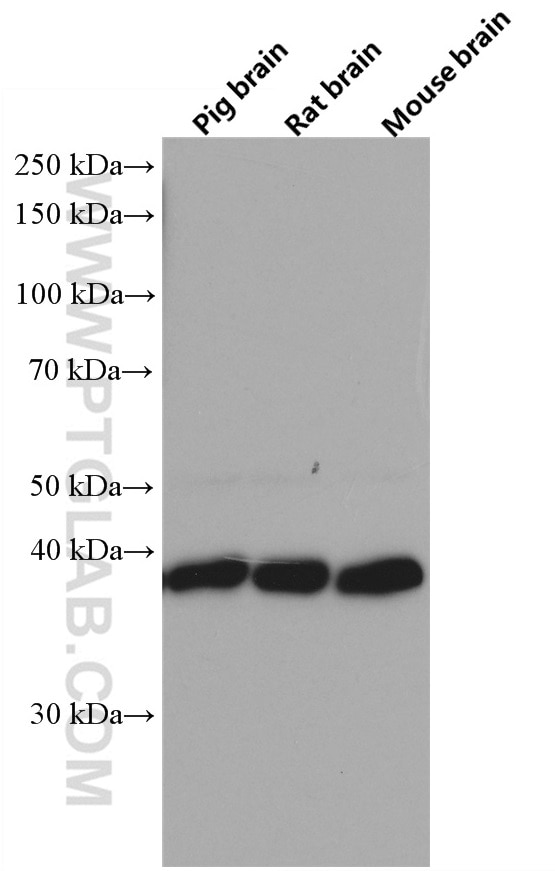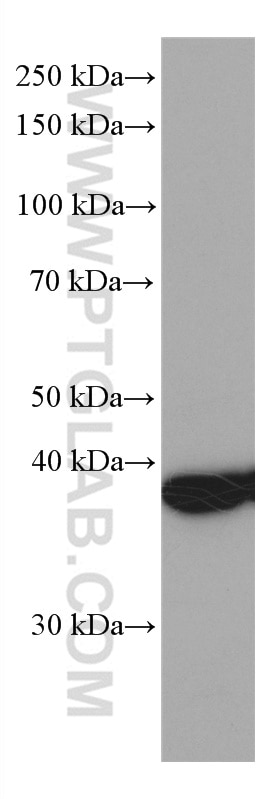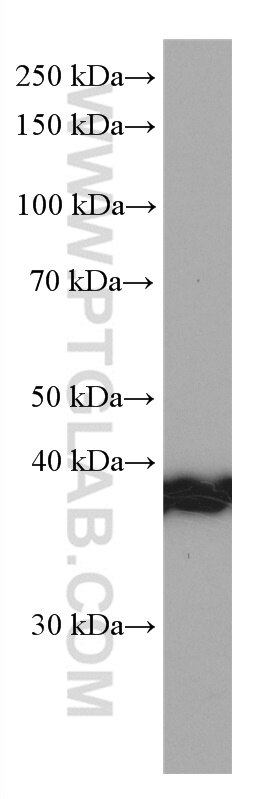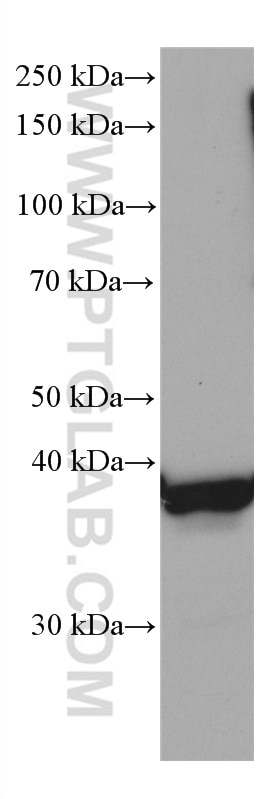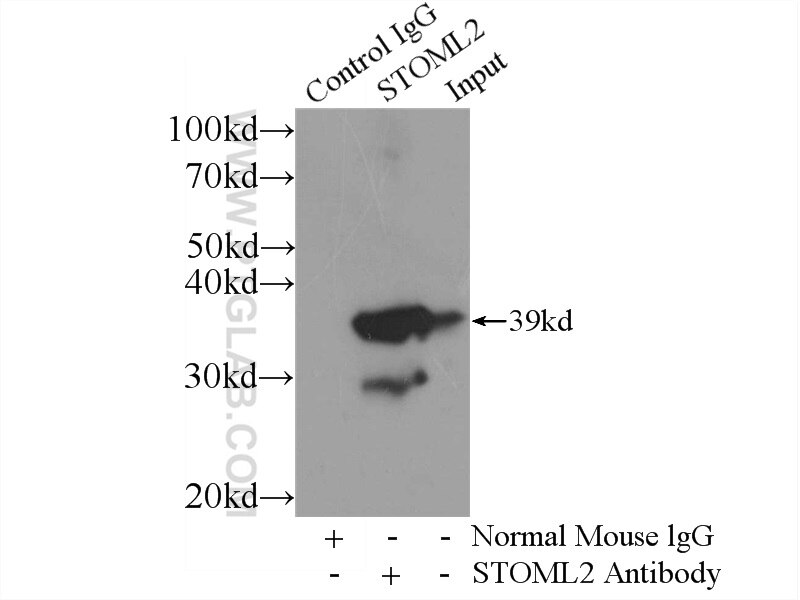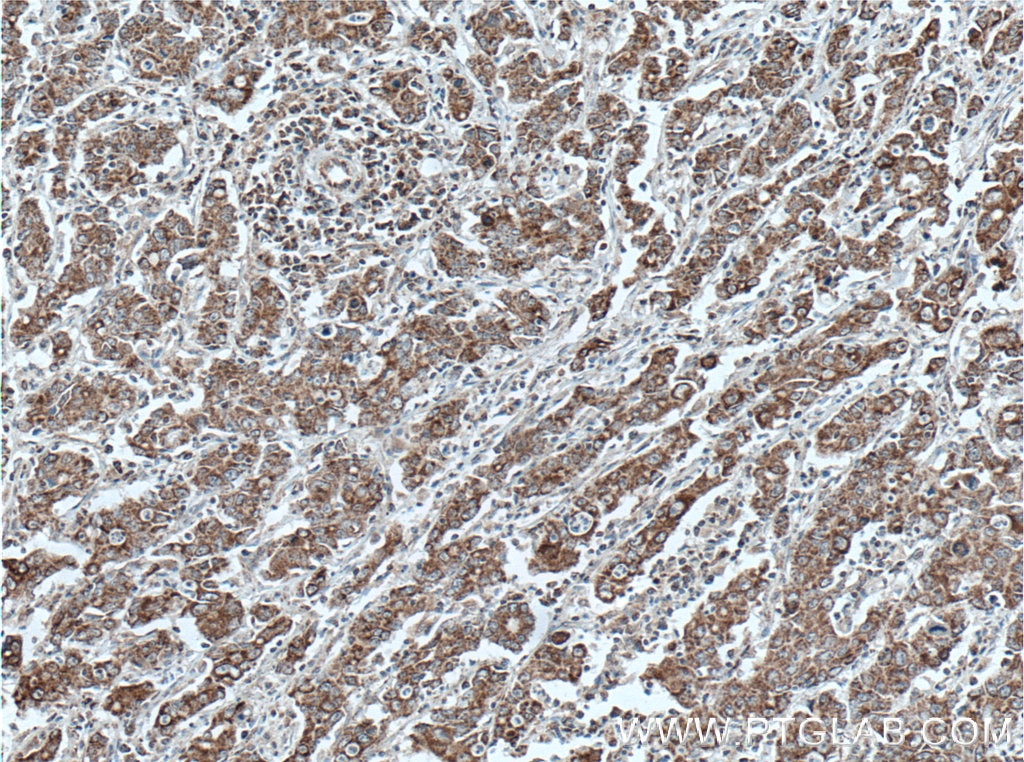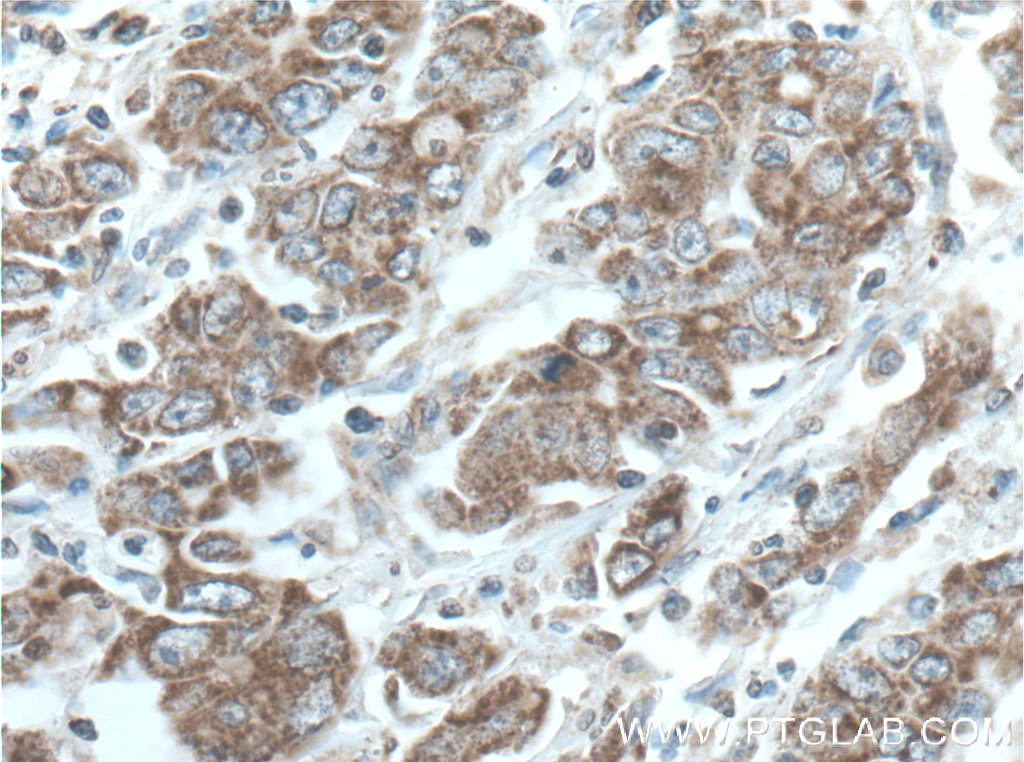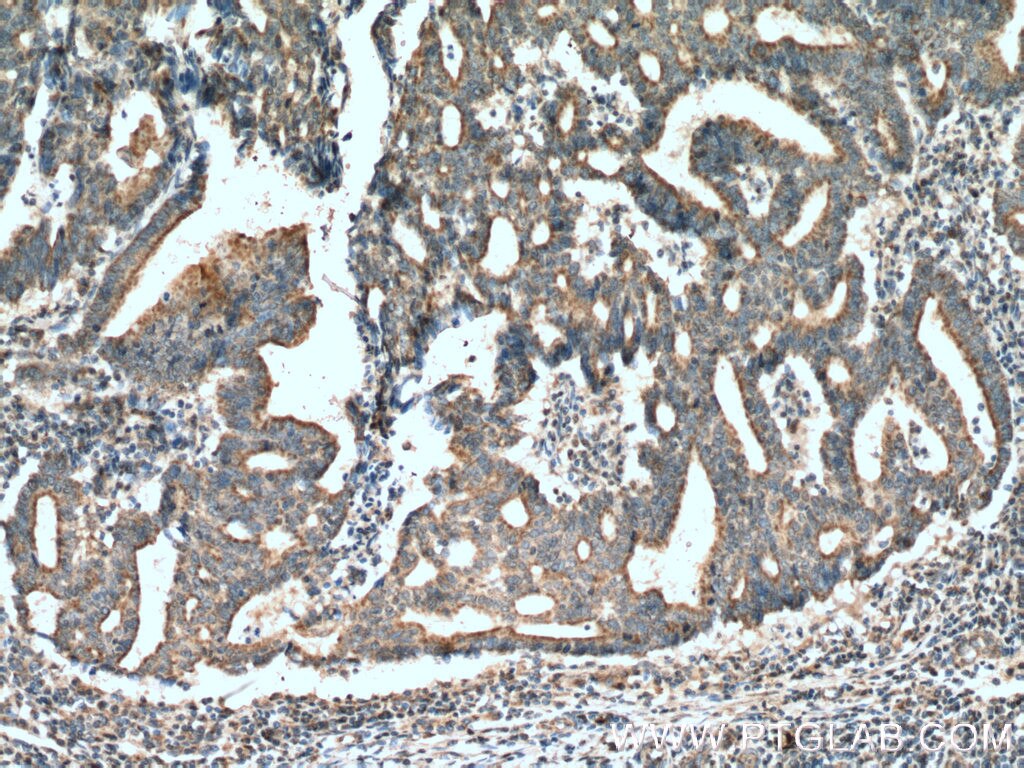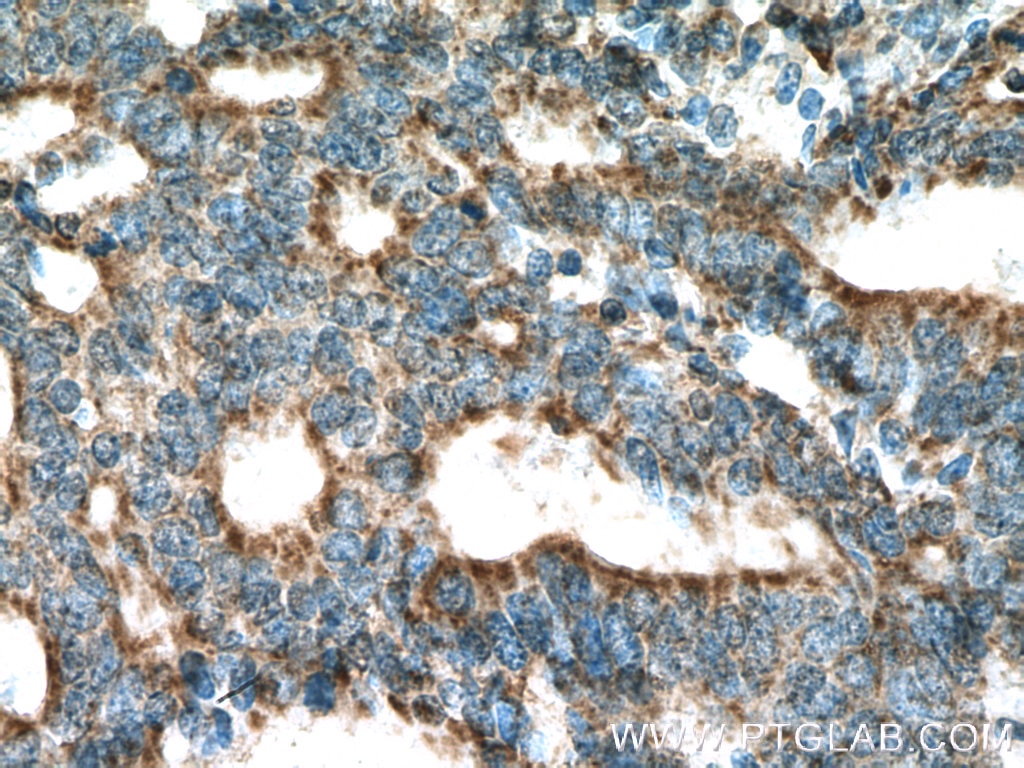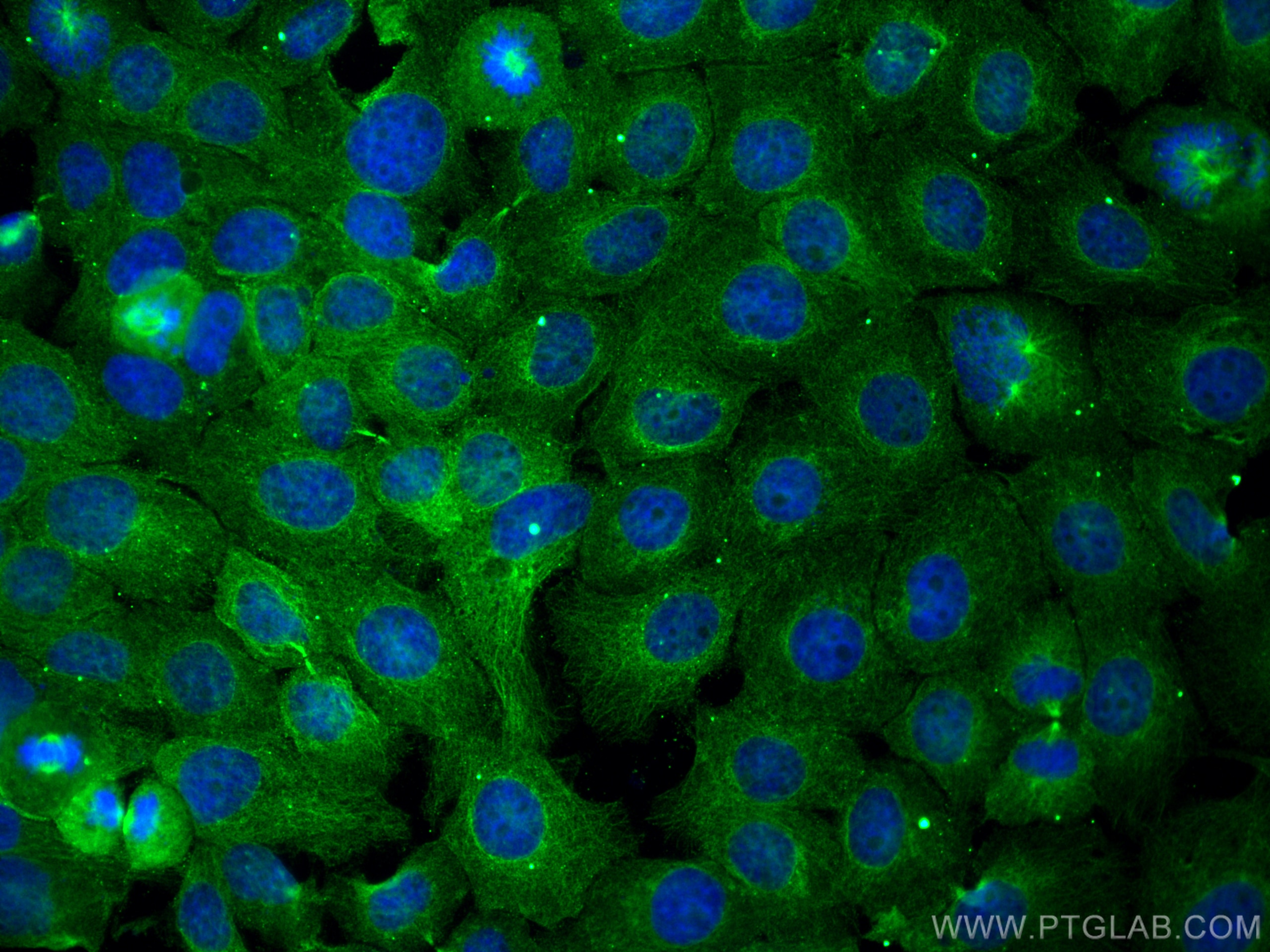Tested Applications
| Positive WB detected in | pig brain tissue, HepG2 cells, MCF-7 cells, RAW 264.7 cells |
| Positive IP detected in | mouse brain tissue |
| Positive IHC detected in | human stomach cancer tissue, human endometrial cancer tissue Note: suggested antigen retrieval with TE buffer pH 9.0; (*) Alternatively, antigen retrieval may be performed with citrate buffer pH 6.0 |
| Positive IF/ICC detected in | A431 cells |
Recommended dilution
| Application | Dilution |
|---|---|
| Western Blot (WB) | WB : 1:5000-1:20000 |
| Immunoprecipitation (IP) | IP : 0.5-4.0 ug for 1.0-3.0 mg of total protein lysate |
| Immunohistochemistry (IHC) | IHC : 1:500-1:2000 |
| Immunofluorescence (IF)/ICC | IF/ICC : 1:400-1:1600 |
| It is recommended that this reagent should be titrated in each testing system to obtain optimal results. | |
| Sample-dependent, Check data in validation data gallery. | |
Published Applications
| KD/KO | See 3 publications below |
| WB | See 7 publications below |
| IHC | See 3 publications below |
| IF | See 1 publications below |
| IP | See 3 publications below |
Product Information
60052-1-Ig targets STOML2 in WB, IHC, IF/ICC, IP, ELISA applications and shows reactivity with human, mouse, rat, pig samples.
| Tested Reactivity | human, mouse, rat, pig |
| Cited Reactivity | human, mouse |
| Host / Isotype | Mouse / IgG2b |
| Class | Monoclonal |
| Type | Antibody |
| Immunogen |
CatNo: Ag0363 Product name: Recombinant human STOML2 protein Source: e coli.-derived, PGEX-4T Tag: GST Domain: 82-356 aa of BC002442 Sequence: IVINVPEQSAVTLDNVTLQIDGVLYLRIMDPYKASYGVEDPEYAVTQLAQTTMRSELGKLSLDKVFRERESLNASIVDAINQAADCWGIRCLRYEIKDIHVPPRVKESMQMQVEAERRKRATVLESEGTRESAINVAEGKKQAQILASEAEKAEQINQAAGEASAVLAKAKAKAEAIRILAAALTQHNGDAAASLTVAEQYVSAFSKLAKDSNTILLPSNPGDVTSMVAQAMGVYGALTKAPVPGTPDSLSSGSSRDVQGTDASLDEELDRVKMS Predict reactive species |
| Full Name | stomatin (EPB72)-like 2 |
| Calculated Molecular Weight | 356 aa, 39 kDa |
| Observed Molecular Weight | 39 kDa |
| GenBank Accession Number | BC002442 |
| Gene Symbol | STOML2 |
| Gene ID (NCBI) | 30968 |
| RRID | AB_2271235 |
| Conjugate | Unconjugated |
| Form | Liquid |
| Purification Method | Protein A purification |
| UNIPROT ID | Q9UJZ1 |
| Storage Buffer | PBS with 0.02% sodium azide and 50% glycerol, pH 7.3. |
| Storage Conditions | Store at -20°C. Stable for one year after shipment. Aliquoting is unnecessary for -20oC storage. 20ul sizes contain 0.1% BSA. |
Background Information
Human stomatin (band 7.2b) is a 31-kDa erythrocyte membrane protein of unknown function but implicated in the control of ion channel permeability, mechanoreception, and lipid domain organization. Stomatin (EPB72)-like 2 (STOML2, synonyms: SLP-2, HSPC108) is a 38.5-kDa protein that is overall approximately 20% similar to human stomatin. STOML2 is also present in mature human erythrocytes , but lacks a characteristic NH(2)-terminal hydrophobic domain found in other stomatin homologues. STOML2 may link stomatin or other integral membrane proteins to the peripheral cytoskeleton and thereby play a role in regulating ion channel conductances or the organization of sphingolipid and cholesterol-rich lipid rafts.
Protocols
| Product Specific Protocols | |
|---|---|
| IF protocol for STOML2 antibody 60052-1-Ig | Download protocol |
| IHC protocol for STOML2 antibody 60052-1-Ig | Download protocol |
| IP protocol for STOML2 antibody 60052-1-Ig | Download protocol |
| WB protocol for STOML2 antibody 60052-1-Ig | Download protocol |
| Standard Protocols | |
|---|---|
| Click here to view our Standard Protocols |
Publications
| Species | Application | Title |
|---|---|---|
Science Golgi-derived PI(4)P-containing vesicles drive late steps of mitochondrial division.
| ||
Mol Cell β-hydroxybutyrate facilitates mitochondrial-derived vesicle biogenesis and improves mitochondrial functions | ||
Mol Cell Proteomics An informatics-assisted label-free approach for personalized tissue membrane proteomics: case study on colorectal cancer. | ||
Int J Mol Sci The Mitochondrial PHB2/OMA1/DELE1 Pathway Cooperates with Endoplasmic Reticulum Stress to Facilitate the Response to Chemotherapeutics in Ovarian Cancer. | ||
Int J Cancer Novel prognostic protein markers of resectable pancreatic cancer identified by coupled shotgun and targeted proteomics using formalin-fixed paraffin-embedded tissues. | ||
Cell Death Dis Stomatin-like protein 2 regulates survivin expression in non-small cell lung cancer cells through β-catenin signaling pathway.
|

